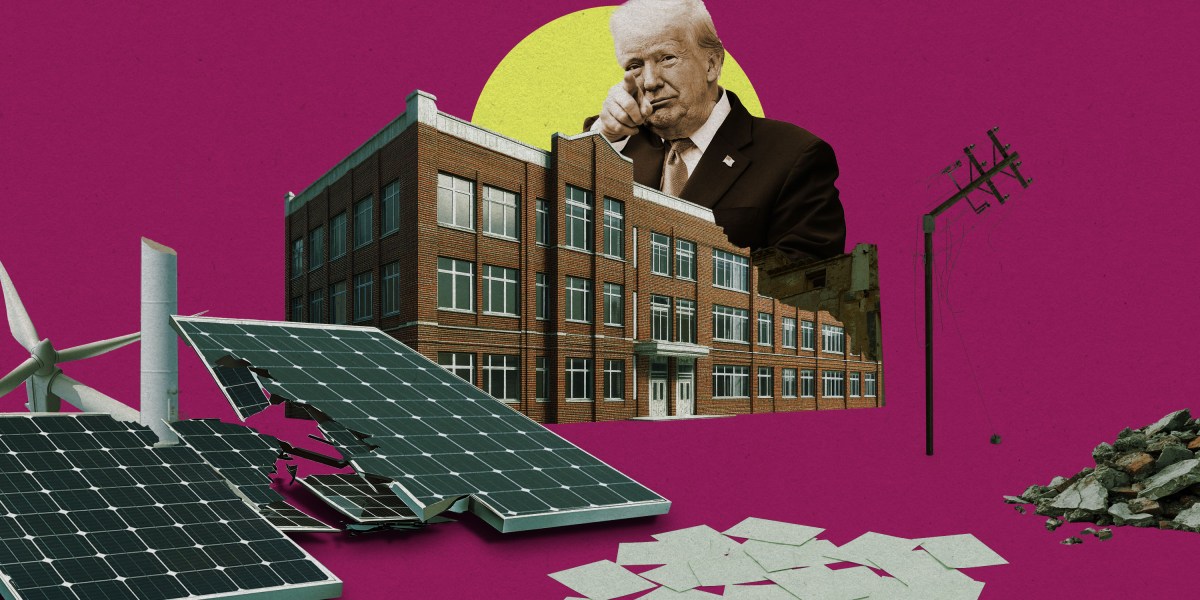Numerous researchers whose grants were terminated didn’t respond to inquiries from MIT Technology Review or declined to comment, amid growing concerns that the Trump administration will punish scientists or institutions that criticize their policies.
Coming cuts
The termination of existing NSF and NIH grants is just the start of the administration’s plans to cut federal funding for climate and clean-energy research.
The White House’s budget proposal for the coming fiscal year seeks to eliminate tens of billions of dollars in funding across federal agencies, specifically calling out “Green New Scam funds” at the Department of Energy; “low-priority climate monitoring satellites” at NASA; “climate-dominated research, data, and grant programs” at the National Oceanic and Atmospheric Administration; and “climate; clean energy; woke social, behavioral, and economic sciences” at the NSF.
The administration released a more detailed NSF budget proposal on May 30th, which called for a 60% reduction in research spending and nearly zeroed out the clean energy technology program. It also proposed cutting funds by 97% for the US Global Change Research Program, which produces regular assessments of climate risks; 80% for the Ocean Observatories Initiative, a global network of ocean sensors that monitor shifting marine conditions; and 40% for NCAR, the atmospheric research center.
If Congress approves budget reductions anywhere near the levels the administration has put forward, scientists fear, it could eliminate the resources necessary to carry on long-running climate observation of oceans, forests, and the atmosphere.
The administration also reportedly plans to end the leases on dozens of NOAA facilities, including the Global Monitoring Laboratory in Hilo, Hawaii. The lab supports the work of the nearby Mauna Loa Observatory, which has tracked atmospheric carbon dioxide levels for decades.
Even short gaps in these time-series studies, which scientists around the world rely upon, would have an enduring impact on researchers’ ability to analyze and understand weather and climate trends.
“We won’t know where we’re going if we stop measuring what’s happening,” says Jane Long, formerly the associate director of energy and environment at Lawrence Livermore National Lab. “It’s devastating—there’s no two ways around it.”
Stunting science
Growing fears that public research funding will take an even larger hit in the coming fiscal year are forcing scientists to rethink their research plans—or to reconsider whether they want to stay in the field at all, numerous observers said.



